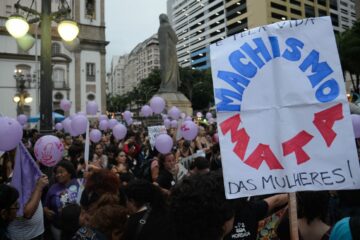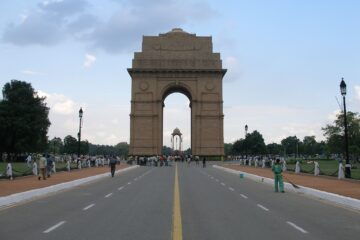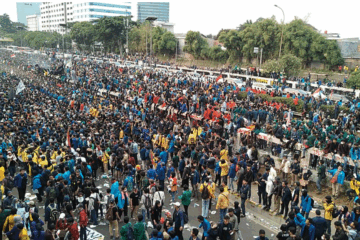Immigrant detention lacked media attention in Canada until the years 2013 and 2016 when detainees in Vancouver and Toronto died within provincial jails. This brought to light the poor conditions Canada imposes on migrants who have been imprisoned.
What is Migrant Detention?
Migrant detention detains and holds individuals imprisoned because of their non-citizen status under Canadian administrative law. Despite having not committed any crimes identified under the Canadian Criminal Code, “[t]hey are handcuffed, shackled, searched, and restricted to small spaces with rigid routines and under constant surveillance,” explains the Human Rights Watch. Those detained have fled persecution, sought opportunities for a better life, or have even lived in Canada since early childhood. Since 2000, at least 16 people have died in these immigration detention centres.
Between November 2015 and 29 February 2016, Prime Minister Justin Trudeau welcomed 25,000 Syrian refugees into Canada. In doing so, he declared that Canada was showing “the world how to open our hearts.” Photos taken at the time and media perception covering the migration event portrayed Canada as a heart-warming country, offering warm smiles and clothes to those immigrating.

In contrast to this publicly recognized sentiment, Hanna Gros, a researcher for Human Rights Watch working on issues related to immigration detention, stated that “[f]or so many people, far from receiving the warm welcome for which Canada is known for, they’re met with handcuffs.” Canada has long held the public eye as a “refugee-welcoming country” and “multicultural nation”. Despite this, studies show that “Canada incarcerates thousands of people on immigration-related grounds every year.” The Canadian immigration detention system and its abusive practices are one of the country’s most troubling secrets.
Migrant Detention as a Human Rights Violation
Within these detention centers, migrants are subject to unsanitary conditions and overcrowding with some conditions resulting in death. The Canada Border Services Agency (CBSA) takes these individuals into custody and detains them in either immigration centers or provincial jails. In the latter space, migrants share facilities with convicted criminals and, subsequently, are forced to wear the uniform orange jumpsuits. According to CBSA, Canada detained 32,000 people in immigration detention between April 2016 and March 2020 and 16% to 28% of them were held in provincial facilities. Many of these individuals are placed in solitary confinement for prolonged periods of time. Kashif Ali, a West African man imprisoned by Canadian forces for seven years in a maximum-security prison, describes the prison conditions as “unbearable.” He recalls being beaten by guards and inmates and revealed his forced isolation in solitary confinement for 103 consecutive days without access to a medical assessment or review.
In October, the national campaign Welcome to Canada put pressure on the provinces to end the agreements with CBSA due to detention practices that place immigrants in provincial jails with no release dates. This campaign was formulated after a report made by Human Rights Watch and Amnesty International documented how the poor conditions of detention profoundly affect the mental health of individuals. For these reasons, both organizations are calling on Canada to abolish the practice of immigration detention. Additionally, in 2015, the United Nations asked Canada to establish a “reasonable time limit for detention.”
Each year, the number of migrants being incarcerated increases. Between 2019 and 2020, 8,825 people were held in immigration detention. At the start of the COVID-19 pandemic in March 2020, Canadian authorities were able to release some of the immigration detainees, revealing “that there are viable alternatives to depriving people of their liberty for indeterminate periods of time.” For those who remained incarcerated, detention conditions became extremely dreadful. Access to phones and showers became more limited for detainees, and in protest of this, many in the Montreal-area immigration holding centre went on hunger strike.
Often coming from war-torn and violent countries, many immigrants struggled with serious mental health issues prior to arriving in Canada. After arriving in Canada, the lengthy and gruelling process of detention can further deteriorate mental health. Immigrants are separated from their families, and, unlike prisoners in the criminal legal system, they are often denied community support and access to doctors and lawyers. For some, the mistreatment and abuse leaves scars for many years afterwards. Sara Maria Gomez Lopez, an individual who arrived in Canada from Mexico in 2012, was detained for three months in a British Colombia prison. A PTSD response to this halts her from wearing jewellery on her wrists as it reminds her of the handcuffs within the detention centre. Immigrants such as Lopez placed their hope in Canada and were betrayed by the system that welcomed them at their arrival.
Since 2011, Canada has detained 200 children in Toronto’s Immigration Holding Centre, and these children are subject to the same human rights violations as others in detention centres. As Samer Muscati, director of the Disability Rights Division at Human Rights Watch, states: “Canadian children are invisible in Canada’s immigration detention system.” These children, separated from their detained parents, can develop serious mental health issues and suffer physical and psychological harm. According to the Australian Human Rights Commission report, The Forgotten Children: National Inquiry into Children in Immigration Detention, one-third of children in these detention centers plagued by nightmares, anxiety, post-traumatic stress disorder, and depression require recurrent psychiatric support.
Canada’s immigration detention system violates several human rights of migrants and there is an urgent need for commitment from the government to abolish this system. The government, in line with their recurrent Human Rights advocation, must outwardly condemn mistreatment, ensure government regulations do not spark mental health issues, and, at its extreme, must prevent future deaths these centres will cause. As Samer Muscat mentions: “Canada is involved in serious human rights abuses against people who come here seeking refuge, seeking a better life.” Many survivors, activists, and several international organizations agree that if Canada wishes to continue with their reputation as a welcoming, inclusive, and respectful nation, it is imperative that this inhumane system be abolished immediately.
Featured image by Brian Stauffer




